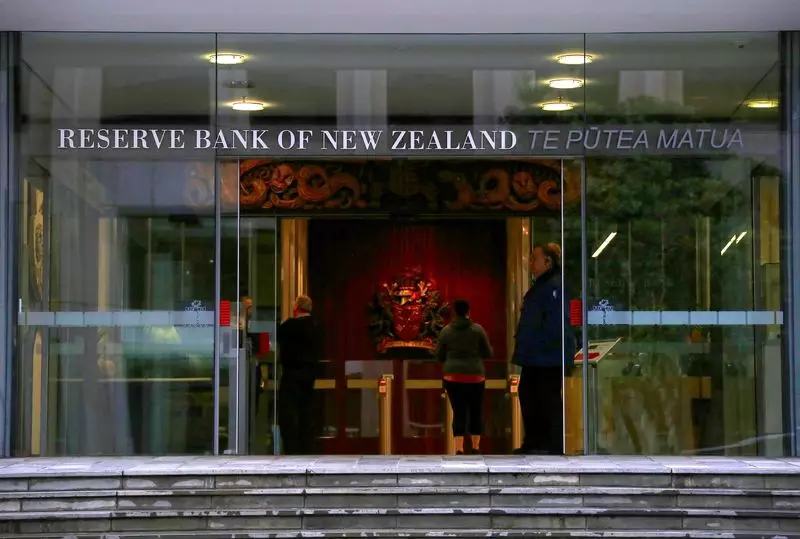In a move that surprised many economists, the Reserve Bank of New Zealand (RBNZ) decided to keep the cash rate steady at 5.5% in its latest meeting. While this decision was in line with expectations, the accompanying commentary from the central bank was more dovish than anticipated. The RBNZ stated that monetary policy would need to remain restrictive, but hinted at the possibility of easing that restraint over time if inflation slowed as projected.
Following the announcement, the New Zealand dollar experienced a 0.74% decline, dropping to $0.6085. Additionally, two-year swap rates fell to a six-month low of 4.6850%, implying a likelihood of 25 basis points of cuts in October. Economists now foresee a greater chance of rate cuts happening sooner or multiple cuts occurring. The market sentiment shifted towards an earlier start to the easing cycle based on the RBNZ’s commentary.
The RBNZ stated that it expected headline inflation to return to the 1% to 3% target range in the latter half of the year, down from 4% in the first quarter. Despite ongoing domestically generated price pressures, signs of easing inflation persistence were observed as capacity pressures and business pricing intentions decreased. The rate hikes implemented by the central bank had a notable impact on the economy, with New Zealand showing growth of 0.2% in the first quarter of 2024, marking the end of a technical recession.
Economists like Abhijit Surya from Capital Economics noted the dovish tone of the RBNZ’s commentary and expressed confidence in an easing cycle starting in November. New Zealand’s aggressive tightening through rate increases since October 2021 mirrored global trends as central banks worldwide began considering rate cuts. The European Central Bank, Canada, Sweden, and Switzerland had all recently reduced interest rates, while the U.S. Federal Reserve was expected to discuss interest rate adjustments in their upcoming meeting.
Despite the broader trend of easing monetary policy, New Zealand’s neighbor Australia remained an exception with the Reserve Bank of Australia contemplating a potential rate hike due to inflation risks. This divergence highlighted the nuanced challenges faced by central banks in the Asia-Pacific region amidst varying economic conditions.
The Reserve Bank of New Zealand’s decision to maintain the cash rate amidst economic uncertainty reflects the delicate balance central banks must strike between controlling inflation and supporting economic growth. Moving forward, the evolving global economic landscape will continue to shape monetary policy decisions, influencing both domestic and international market dynamics.

